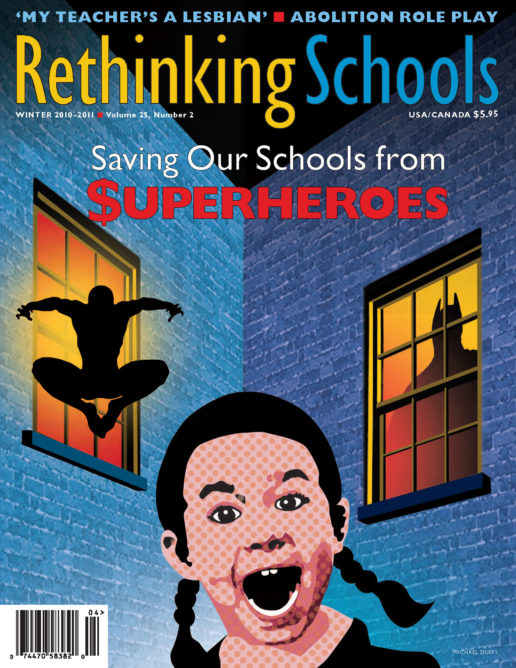Saurcana, Terror from the Sea
Fiction That Tells the Truth
Illustrator: Bill Hughes
Saurcana, Terror from the Sea
By Robert Hager
(Seaworm Press, 2004)
www.saurcana.com
175 pp. $9.99
There is no neutral education. Education is either for domestication or for freedom. —Goan writer João da Veiga Coutinho
Guided by this bold premise, Texas educator and disability rights attorney Robert Hager has written an imaginative novel for middle schoolers that encourages critical thinking about society and history—even as the Texas State Board of Education, in its latest round of social studies textbook revisions, moved decidedly in the opposite direction.
Saurcana, Terror from the Sea is geared for the classroom and can be ordered with a teachers’ guide. Its themes are pertinent: How do we learn our history? What if our own experiences don’t jibe with official accounts? How are fears exploited? Do wars protect people? If so, whom?
The novel and its characters grew from Hager’s work in the 1970s as co-founder and director of an alternative program in Houston called Esperanza, the Outdoor School, an innovative early model of the Adventure Playground, where children create their own play structures using simple tools and materials. The approach, which has had a recent revival in the United States, honors Jean Piaget’s maxim “To understand is to invent.”
Hager’s literary invention is a reptilian world of land and sea animals whose lives intersect along a rocky shore. As the story begins, we are introduced to our hero, Esper, a young recruit who is beginning his training to compete for the elite guard in his community of lizard-like Saurcans.
The Saurcans live on cliffs high above the sea. Living separately from them in the cove below are the Uncos, creatures who harvest seaweed and dive for precious stones to benefit the Saurcans. In return, the Uncos are protected from killer fish, the dreaded Cyprines, by the tough special force that Esper yearns to join. The guards keep constant watch from cliffside posts, using a catapult to launch rocks against any Cyprine who ventures too close to the Uncos.
Galdor, the high commander of the Saurcan Guard, barks orders in drill sergeant fashion, admonishing Esper and the other trainees that they, as defenders of the community, must open their eyes “and keep them open at all times.”
That directive is taken to heart by Esper, whose curiosity and desire for truth lead him to discover things that Galdor really doesn’t want him to see, including subjugation disguised as protection. Esper embarks on a dangerous quest to answer his inner doubts about what he and his fellow recruits have been told by Galdor about Saurcan history. Supposed enemies become Esper’s best guides, allowing him to make his own discoveries, trust his instincts, and realize talents, such as the ability to swim, that he’d been told he didn’t possess. The fearsome Cyprine is actually a wise matriarch whose memory holds a key to the mystery of how Saurcans and Uncos originated.
In the story’s climactic moments, Esper risks his life to expose the truth: Uncos are not a separate species, but are really Saurcans whose development has been intentionally limited in order to maintain a compliant labor force. The community’s young ones are the first not only to embrace the reunification of Saurcans and Uncos, but also to forgive the villain, Galdor, who is reconciled rather than shunned or killed.
The novel’s themes are pursued through allegory that is neither too overt nor too obscure for young readers, giving them a framework to make connections to real-life racism, classism, and militarism. The story doesn’t employ high-tech gizmos or magic. Like the Adventure Playground, Saurcana’s resources are elemental: stone, water, wood, plants, animals. Esper expresses strong emotions in healthy ways, and both oral and written forms of history are important tools in his search.
Tweens may empathize with Esper and his friends—by middle school, many students have faced Galdor-like authority figures in school or home environments where there is more pressure to conform than to develop independent ethical selves. Young readers are likely to finish the novel with a greater inclination to question blind obedience and to be more confident in their own powers of reasoning and observation.
In the land of Saurcana, children grow freely when they are guided wisely. Hager has put what he’s learned as an educator into a vivid, compassionate story that affirms the personal worth and integrity of all creatures, imaginary and real. The book does what every board of education should be doing with their texts: encouraging the curious child.

